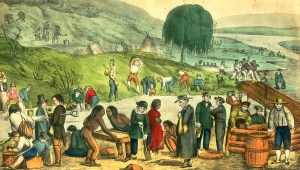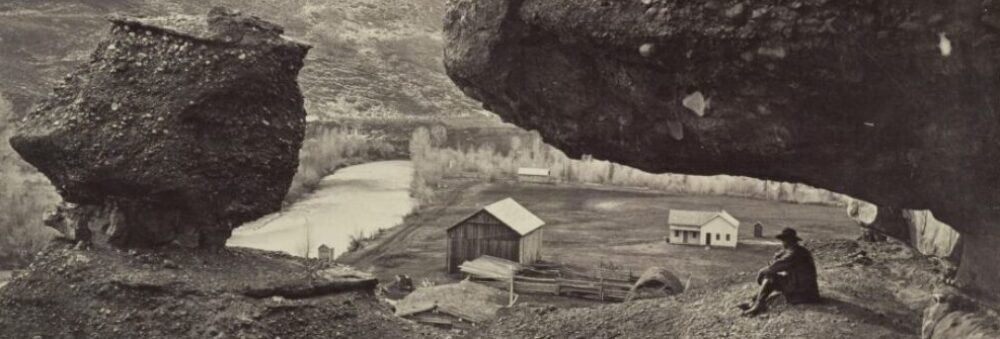 During the fall term of 2011, Professor Martha Sandweiss, History Department, and Brian Just, Art Museum Curator of the Art of the Ancient Americas, co-taught a course entitled “Artifacts, Images, and History: The American Southwest.” The course explored Native arts of the American Southwest by analyzing Princeton’s own collections in the holdings of the Art Museum, the Department of Geosciences, and the Department of Rare Books and Special Collections. The Princeton University Art Museum magazine highlighted the course in its Winter 2012 issue, also available on the museum’s news page: The Museum in the Classroom.
During the fall term of 2011, Professor Martha Sandweiss, History Department, and Brian Just, Art Museum Curator of the Art of the Ancient Americas, co-taught a course entitled “Artifacts, Images, and History: The American Southwest.” The course explored Native arts of the American Southwest by analyzing Princeton’s own collections in the holdings of the Art Museum, the Department of Geosciences, and the Department of Rare Books and Special Collections. The Princeton University Art Museum magazine highlighted the course in its Winter 2012 issue, also available on the museum’s news page: The Museum in the Classroom.
Professor Sandwiess’s spring course, “History of the American West,” will make use of the department’s strong holdings of gold rush and overland journey material. Sixteen manuscript overland narrative colle ctions consisting of letters, journals, diaries, and scrapbooks were recently digitized and placed in the Princeton University Digital Library, allowing students (and scholars worldwide) online access to primary documents from the period.
ctions consisting of letters, journals, diaries, and scrapbooks were recently digitized and placed in the Princeton University Digital Library, allowing students (and scholars worldwide) online access to primary documents from the period.
While many of the collections are recent additions to the department, such as the Daniel Gano Gold Rush Scrapbook (C1398) and the David Starr Hoyt Manuscripts (C1407) that were acquired by the Manuscripts Division in 2011, overland narratives were a particular interest to Philip Ashton Rollins, Class of 1889. While Rollins focused more on printed works, manuscripts were often selected as well, such as a forty-miner’s journal written by M. A. Violette, “Manuscript Journal of Overland Journey to Sleepy Hollow,” 1849 (C0199, no. 1092).

Thornton, Oregon and California in 1848 … (Harper & Brothers, 1849). Philip Ashton Rollins Collection
Rollins early collecting of printed works was guided by Henry R. Wagner’s bibliography of overland journeys, The Plains and the Rockies: A Bibliography of Original Narratives of Travel and Adventure, 1808–1865 (first published in the 1920s and revised and expanded many times since). Rollins’ collection of overland narratives naturally captured the California Gold Rush era (1848–53) and marks the beginning of the department’s gold rush collections. Many of the printed works collected by Rollins can be found online via Google Books or the Hathi Trust Digital Library, such as J. Quinn Thornton’s Oregon and California in 1848: With an Appendix, Including Recent and Authentic Information on the Subject of the Gold Mines of California, and Other Valuable Matter of Interest to the Emigrant, Etc. (New York: Harper & Brothers, 1849). Rollins, however, soon ventured well beyond Wagner’s cut-off point, the close of the Civil War in 1865, which allowed him to continue collecting overland narratives throughout the railroad years.
